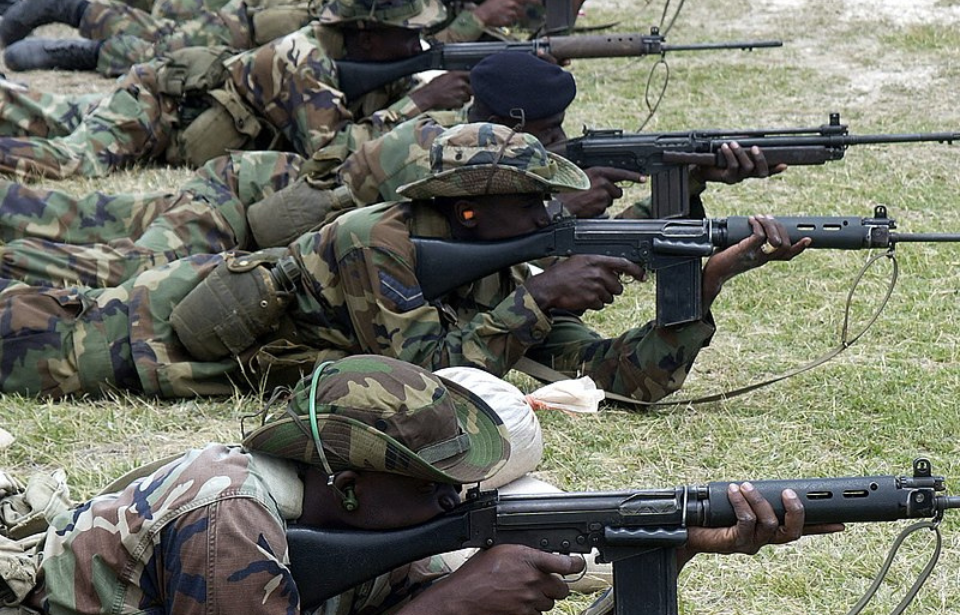The FN FAL is a legendary Cold War-era weapon. The 7.62 x 51 mm NATO-caliber rifle is famed for its reliability and versatility, serving in diverse combat environments across many countries. With a distinctive design and impressive track record, the FAL became a symbol of military engineering excellence, with many still lauding its capabilities on the battlefield.
Development of the FN FAL
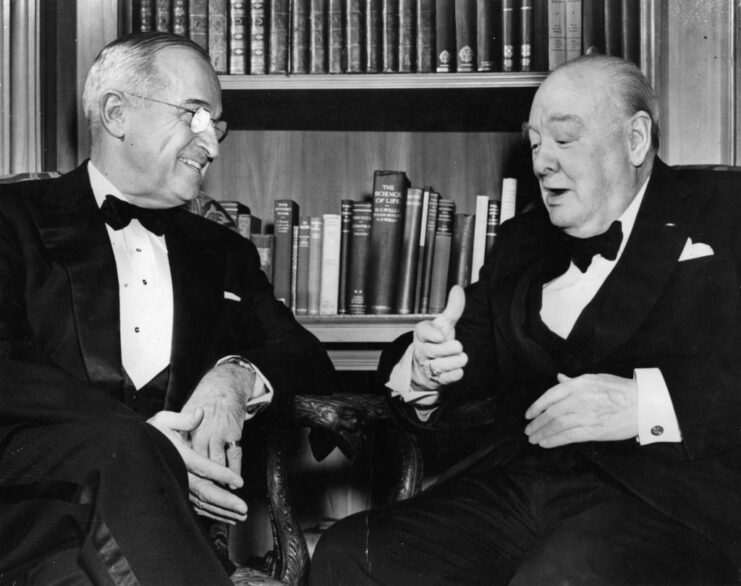
The FN FAL – or Fusil Automatique Léger (Light Automatic Rifle) – was developed by Belgian company FN Herstal in the post-World War II era. The need for a new battle rifle arose from lessons learned during the conflict, when most combat occurred at ranges of 300-400 meters. This led to the desire for a rifle that could fire an intermediate cartridge, balancing range and power with manageability and weight.
The British Army initially showed interest in FN’s design, urging the company to create prototypes chambering the .280 British cartridge. However, geopolitical influences (particularly from the United States) led to the adoption of the 7.62 × 51 mm NATO cartridge.
This was solidified with a “quid pro quo” deal between re-elected British Prime Minister Winston Churchill and US President Harry Truman, wherein the United Kingdom accepted the 7.62 mm round in exchange for America’s support of the FN FAL becoming the North Atlantic Treaty Organization‘s standard rifle.
FN FAL specs.
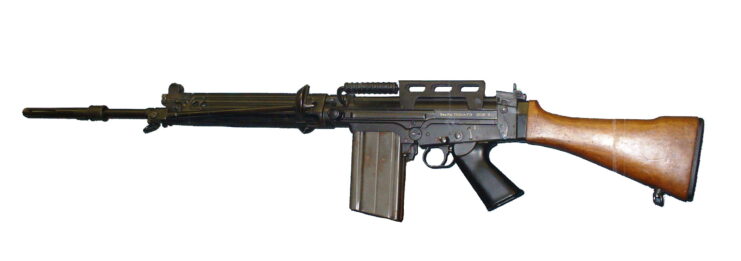
The FN FAL is a gas-operated, selective-fire battle rifle that fires the aforementioned 7.62 × 51 mm NATO cartridge. It features a short-stroke gas piston system, similar to the Soviet SVT-40, and a tilting breechblock locking mechanism. The standard weapon weighs approximately 9.5 pounds, with a barrel length of 21 inches and an overall length of around 43 inches.
Field use of the FN FAL is facilitated by its adjustable gas system, allowing soldiers to fine-tune the rifle’s performance based on environmental conditions and ammunition types. Despite its weight and length, the FAL is known for its reliability and accuracy, especially in semi-automatic mode.
The FAL has a rate of fire of 650-700 RPM, with a muzzle velocity of 840 meters per second. It’s equipped with a 20-round detachable box magazine, although 30-round magazines can also be used. The weapon can be fitted with many accessories, including scopes, bayonets, grenade launchers and night vision devices, making it a versatile battlefield rifle.
Adoption by NATO countries
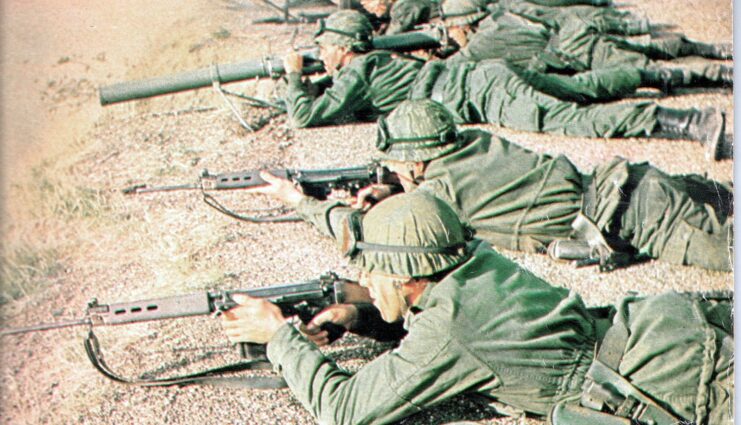
The FN FAL quickly gained popularity among NATO countries, earning the nickname, “The Right Arm of the Free World.”
The British adopted a semi-automatic version known as the L1A1 Self-Loading Rifle (SLR), while other Commonwealth nations, like Australia and Canada, followed suit with their own versions. The rifle’s design and powerful cartridge made it suitable for a wide range of environments, from the jungles of Southeast Asia to the deserts of the Middle East.
One of the most notable engagements involving the FN FAL was the Siege of Jadotville in 1961, where Irish UN peacekeepers held off a much larger force of Katangese gendarmerie. The FAL’s reliability and firepower were crucial in their ability to withstand the siege and inflict significant casualties on the attackers. While ending in surrender, the engagement highlighted the effectiveness of the gun in both defensive and offensive operations.
The FAL also saw extensive use during the Falklands War in 1982, where both the British and Argentine forces were equipped with the rifle. The conflict demonstrated its versatility and reliability in harsh conditions, further cementing its reputation.
Where else did the FN FAL see action?
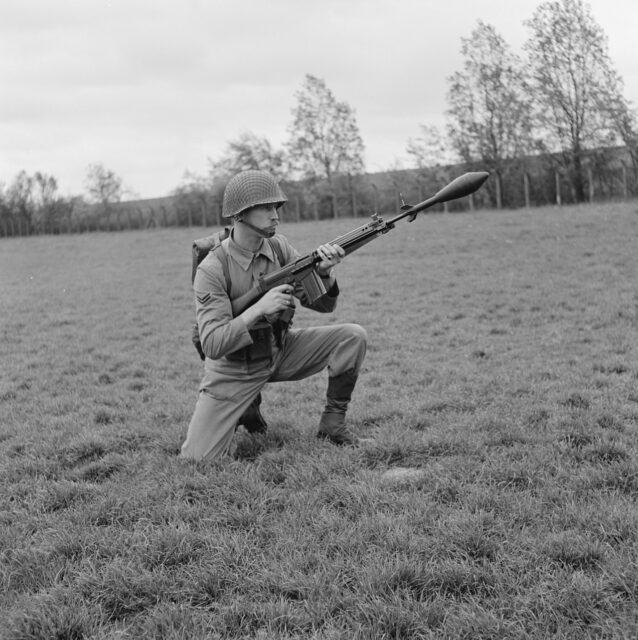
Beyond the Siege of Jadotville and the Falklands War, the FN FAL was a staple in numerous conflicts throughout the Cold War era. It was used by the Israeli forces during both the Six-Day War and the Yom Kippur War, where its long-range accuracy and stopping power were highly valued.
In Africa, the FAL was used by both government forces and insurgents. Throughout the Rhodesian Bush War, the rifle’s durability and firepower were crucial in counter-insurgency operations. The Rhodesian Security Forces often relied on its ability to deliver accurate fire in the dense bush, giving them an edge over guerrilla fighters armed with AK-47s.
The FAL’s impact was also felt in South America, where it was used by various military and paramilitary forces. In Brazil, the rifle was a mainstay of the armed forces, until it was eventually replaced by the FN Minimi.
Replaced by newer, more modern equipment
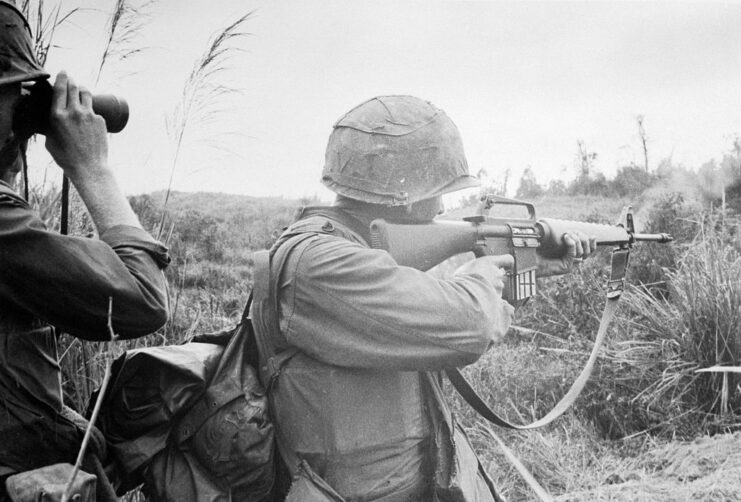
Despite its success, the FN FAL was eventually phased out of service in many countries following the shift toward smaller, lighter assault rifles chambering in 5.56 mm NATO. The British Army replaced the L1A1 SLR with the LA581 in 1985, while other NATO countries adopted rifles like the (much disliked) M16 and the G36.
More from us: The M249 SAW Machine Gun Continues to Enhance the Role of Infantrymen in Combat
Want to become a trivia master? Sign up for our War History Fact of the Day newsletter!
The transition to these newer rifles was driven by the need for increased mobility and higher ammunition capacity in modern combat scenarios. However, the FN FAL remains in use in some parts of the world, particularly in developing countries and by special forces units that appreciate its reliability and stopping power.
